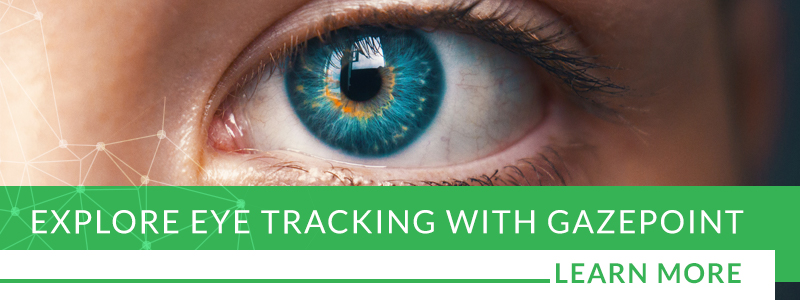
Eye Tracking Applications: Usability Studies
Today, in the age of the internet, everything is customizable, from targeting ads toward your ideal audience to redesigning websites for better user engagement. Visual tracking can give companies the data they need to make objective decisions on how to customize their products and services. In this article, we explore a study that has outlined how companies can do just that.
Recent User Experience Research
Today, we are focusing on a 2018 study: “Navigating the Online World: Gaze, Fixations, and Performance Differences Between Younger and Older Users.” The study used visual tracking to compare the human-computer interactions of older adults with younger participants, creating an experiment that matched a range of users with different website designs. The researchers tracked what kind of web design the user interacted with and measured a number of factors, including:
- The user’s satisfaction with the experience
- The user’s accuracy and efficiency in completing a task
- The path of the user’s gaze and the number and duration of their visual fixations
As older adults are the fastest growing demographic of internet users, they have become the subjects of more and more user experience research. They have difficulty navigating webpages and accomplishing tasks online compared to their younger counterparts. They and the companies they interact with both benefit when visual tracking and studies such as the one mentioned above are utilized to improve older adults’ human-computer interactions. Seniors maintain independence and quality of life through easy access to information, and businesses gain their online patronship.
 Younger Internet Users vs. Older Users
Younger Internet Users vs. Older Users
Thanks to this 2018 studies and others like it, designers and usability experts now have a better understanding of how older adults differ from younger internet users. There are two major differences between the users themselves that affect their human-computer interactions: experience and field of vision.
Experience
Younger adults by and large grew up using the internet, and this affects how they navigate and interact with webpages. For one, this experience means they often know where to find the elements they need to complete a task. They also have practice ignoring irrelevant elements on the webpage, navigating a cluttered field of vision, and completing a task quickly and effectively.
In comparison, older adults search a page less efficiently because they do not know what to expect. They have trouble understanding what elements to ignore and which are productive, and a cluttered page distracts them more.
Field of Vision
Adults experience a decline in useful field of vision (UFOV) and the ability to process peripheral vision as they age. As a result, older adults struggle when important navigational elements are placed in the periphery of a webpage. Tasks that require a wide UFOV also become more difficult. Elements that increase this difficulty include the presence of distracting elements on the webpage and an increase in distance between important elements and the center of the screen.
How Eye Tracking Applies
Visual tracking can be the key to understanding the design features that capture a user’s attention and what elements they fail to notice. With eye-tracking technology like the Gazepoint GP3, you can track where a user looks and understand what they find interesting or what they have trouble understanding through fixations, and it can help you identify whether a user’s search of the page is efficient or inefficient.
The GP3 is a noninvasive data-gathering tool made to collect important, objective information. There is a distinct relationship between where a user looks and what they pay attention to, which is why eye tracking is becoming an essential part of user experience research. Rather than relying on user surveys, you can see a user’s interests and difficulties for yourself.
Better Design for Better User Interactions
At this time, there is not a lot of research on age-dependent differences in users’ eye movements and performance, but what studies do exist draw many of the same conclusions. Older users struggle when important navigational elements are in the periphery and the webpage is cluttered with distracting, irrelevant features.
If you plan your web design to focus on the end user, then these studies have a few suggestions. Placing navigational elements in the center and periphery lead to a high success and satisfaction rate for all users. They all benefit from simple, straightforward webpage designs. To see for yourself, and to measure responses to whatever design options you are considering, invest in Gazepoint eye-tracking technology.
Invest in UX Design With Gazepoint
From human-computer interaction studies to medical diagnosis, Gazepoint eye tracking has wide applicability across industries. Learn more by visiting our publications page and exploring our blog. If you have completed a study with our hardware or software, contact our team today to be cited here on our site. If you are looking for affordable, research-grade equipment, then place your order with Gazepoint today!



